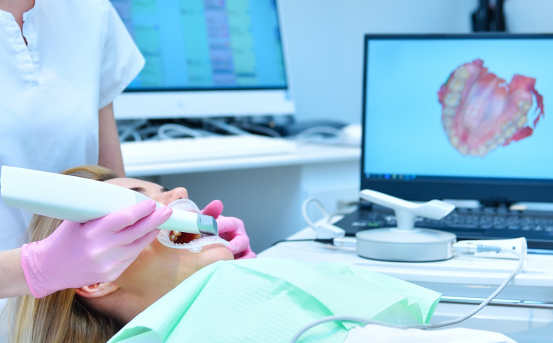When it comes to preserving natural teeth and ensuring long-term oral health, conservative dentistry plays a vital role. Unlike aggressive interventions that may involve extensive removal of tooth structure or surgical procedures, conservative dentistry focuses on minimally invasive treatments that aim to save, restore, and retain as much of the natural tooth as possible. From managing early tooth decay and minor cracks to treating pulp infections without dental extraction, this branch of dentistry emphasizes functionality, aesthetics, and tooth longevity.
One of the most critical steps in any conservative dental treatment is accurate diagnosis. Before initiating any restorative procedure whether it’s a simple filling, pulp capping, or a root canal dentists must understand the exact nature, extent, and location of the problem. A superficial examination is not enough; a comprehensive diagnostic process is necessary to identify subtle issues such as incipient caries, microscopic fractures, internal resorption, or pulp vitality status.
What Is Conservative Dentistry?
Conservative dentistry is a branch of dentistry that focuses on the preservation of natural teeth through procedures like fillings, root canal treatments, inlays, onlays, and crowns. It aims to treat damaged teeth while keeping as much of the original tooth structure intact as possible.
Early and correct diagnosis is the foundation of successful conservative treatment. That’s why diagnostic procedures are prioritized before any treatment begins.
Why Is Diagnosis Crucial in Conservative Dentistry?
- Early Detection of Dental Issues :- Proper diagnosis helps detect issues such as caries (tooth decay), enamel erosion, pulp inflammation, or small fractures before they become serious problems.
- Prevents Overtreatment :- Conservative dentistry is all about minimal intervention. Accurate diagnosis ensures only necessary treatment is done, preserving the maximum amount of tooth structure.
- Customizes Treatment Plan :- Every patient’s dental condition is unique. A good diagnosis enables the dentist to choose the right approach whether it’s a filling, pulp therapy, or crown.
- Increases Treatment Success Rate :- A well-diagnosed condition leads to targeted treatment, minimizing the risk of future complications and repeat procedures.
Common Dental Conditions Diagnosed in Conservative Dentistry
- Dental caries (cavities)
- Tooth hypersensitivity
- Pulpitis (inflammation of the pulp)
- Cracked tooth syndrome
- Enamel hypoplasia
- Internal and external tooth resorption
Diagnostic Methods in Conservative Dentistry
Let’s look at the key tools and techniques used by dentists to diagnose problems that require conservative treatment:
- Visual and Clinical Examination :- The first and most basic step involves checking the teeth and gums under good lighting. Dentists look for:
- Color changes
- Surface texture
- Presence of carious lesions
- Cracks or chips
- Tooth wear
- Radiographic Examination (X-Rays) :- Dental X-rays are essential for detecting:
- Interproximal caries (between teeth)
- Deep decay near the pulp
- Periapical abscesses
- Bone loss
- Root fractures
- Transillumination :- This method uses a bright light to highlight tooth structure and help detect cracks, caries, and enamel defects. Cracks and decay appear as dark shadows.
- Pulp Vitality Tests :- To determine the health of the pulp (inner tissue of the tooth), dentists perform:
- Thermal tests (using hot or cold stimuli)
- Electric pulp testing
- Laser Doppler flowmetry (in advanced settings)
- Caries Detection Dyes :- These special dyes are applied to the tooth to highlight demineralized (decayed) areas. It helps differentiate between healthy and infected dentin during cavity preparation.
- Cone Beam CT (CBCT) :- For complex cases like deep caries or root fractures, CBCT provides a 3D view of the tooth and surrounding structures. It’s especially useful in root canal therapy planning.
- Laser Fluorescence :- This non-invasive tool detects early-stage caries by measuring fluorescence levels in the tooth. It’s especially effective for detecting hidden caries that aren’t visible in X-rays.
Advancements in Diagnostic Technology
Modern conservative dentistry is benefitting from continuous technological innovation. Some cutting-edge tools include:
- Intraoral cameras for high-definition magnified views
- AI-assisted caries detection software
- Digital radiography for instant imaging with less radiation
- Optical coherence tomography (OCT) for detailed internal tooth imaging
These innovations allow for more accurate, quicker diagnoses and better patient education during treatment discussions.
Role of Diagnosis in Treatment Planning
A well-established diagnosis in conservative dentistry directly informs the treatment plan. Based on the extent of the damage, the dentist may opt for:
- Preventive measures like fluoride varnishes or sealants
- Restorative options like tooth-colored fillings, inlays, or onlays
- Pulp therapy such as pulp capping or root canal treatment
- Crowns for fractured or extensively restored teeth
In every scenario, diagnosis ensures the right treatment is chosen at the right time.
Conclusion
Diagnosis in conservative dentistry is more than just a preliminary step — it is the cornerstone of successful dental care. With accurate and early detection of dental issues, conservative dentistry ensures that your natural teeth are preserved for as long as possible with minimal intervention.
Whether you’re visiting the dentist for a routine check-up or dealing with sensitivity or decay, diagnostic techniques play a crucial role in choosing the right conservative treatment. Thanks to modern technology and comprehensive diagnostic tools, today’s dentists are better equipped than ever to protect your smile.























